April 21 stands as one of history’s most eventful days, witnessing the rise and fall of empires, groundbreaking discoveries, and moments that shaped our modern world across centuries of human achievement.

Politics and Government Events on April 21
1960 – Brasília Officially Inaugurated as Brazil’s Capital
Brazil transferred its seat of government from Rio de Janeiro to the newly constructed capital city of Brasília. At precisely 9:30 AM, the Three Powers of the Republic simultaneously moved to their modernist headquarters in the planned city.
The inauguration marked the culmination of President Juscelino Kubitschek’s ambitious vision to develop Brazil’s interior. Architect Oscar Niemeyer’s futuristic designs transformed the empty plateau into a symbol of national progress and modernization.
1967 – Greek Military Coup Establishes Seven-Year Dictatorship
Colonel George Papadopoulos led a military coup just days before scheduled general elections in Greece. The colonels seized control of key government buildings and communications centers throughout Athens in a coordinated overnight operation.
The military junta suspended constitutional rights and established authoritarian rule that would persist for seven years. This regime became known as the “Regime of the Colonels” and fundamentally altered Greek political life until its collapse in 1974.
1948 – UN Security Council Adopts Resolution 47 on Kashmir
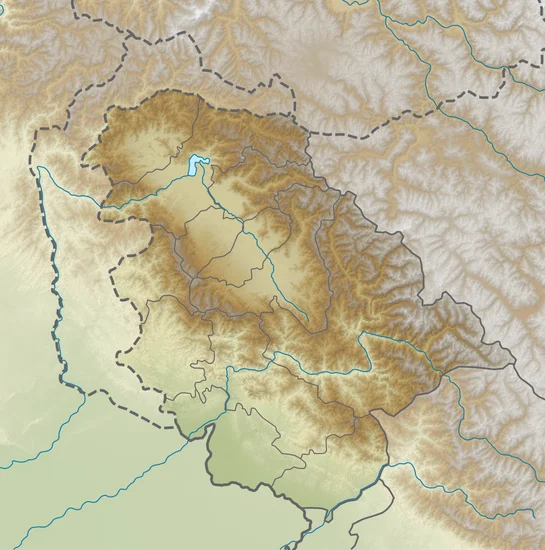
The United Nations Security Council passed Resolution 47 addressing the escalating Kashmir conflict between India and Pakistan. The resolution called for a ceasefire and established the framework for international mediation in the disputed territory.
This landmark resolution established the United Nations Military Observer Group in India and Pakistan. The Kashmir question would remain one of the most enduring conflicts in international relations, with this resolution serving as a foundational diplomatic document.
1975 – South Vietnamese President Flees as Saigon Falls
President Nguyễn Văn Thiệu abandoned Saigon as North Vietnamese forces captured Xuân Lộc, the last major defensive position protecting the capital. His flight signaled the complete collapse of South Vietnamese resistance and the imminent end of the Vietnam War.
The fall of Xuân Lộc removed the final obstacle to a direct North Vietnamese assault on Saigon. Within days, Communist forces would enter the capital, ending decades of conflict and unifying Vietnam under Communist rule.
1993 – Former Bolivian Dictator Sentenced to 30 Years
Bolivia’s Supreme Court in La Paz sentenced former dictator Luis García Meza to 30 years imprisonment without parole. The court convicted him on multiple charges including murder, theft, fraud, and violating the constitution during his brutal 1980-1981 regime.
García Meza’s conviction marked a significant moment in Latin American justice and accountability. His regime had been notorious for human rights violations, drug trafficking connections, and the systematic persecution of political opponents.
2010 – Controversial Kharkiv Pact Signed Between Ukraine and Russia

Ukrainian President Viktor Yanukovych and Russian President Dmitry Medvedev signed the Kharkiv Pact, extending Russia’s naval base lease in Crimea in exchange for reduced gas prices. The agreement sparked fierce domestic opposition and international concern about Ukrainian sovereignty.
The pact would later become a symbol of Russian influence over Ukrainian politics. Russia unilaterally terminated the agreement on March 31, 2014, following its annexation of Crimea and the beginning of broader military intervention in Ukraine.
Military and Naval History on April 21
1918 – Red Baron Shot Down and Killed Over France
German fighter ace Manfred von Richthofen, the legendary “Red Baron,” met his death in aerial combat over Vaux-sur-Somme. The most feared pilot of World War I, with 80 confirmed kills, fell during a low-altitude dogfight with Allied aircraft.
Von Richthofen’s death marked the end of an era in aerial warfare and dealt a significant blow to German morale. His red-painted Fokker triplane had become an iconic symbol of German air power, and his loss represented the shifting tide of the war.
1914 – Ypiranga Incident Escalates US-Mexico Tensions
The U.S. Navy intercepted a German arms shipment destined for Mexico near the port of Veracruz aboard the steamship Ypiranga. This incident became a catalyst for American military intervention in the Mexican Revolution.
The arms seizure heightened diplomatic tensions between the United States and Mexico during a period of revolutionary upheaval. The incident contributed to the broader pattern of American interventionism in Latin America during the early 20th century.
1945 – Soviet Forces Attack German High Command at Zossen
Soviet forces launched a decisive assault on the German High Command headquarters at Zossen, south of Berlin. The attack targeted the nerve center of German military operations as the Third Reich collapsed in its final days.
The capture of Zossen represented the systematic destruction of German military command structure. With Berlin under siege, this assault effectively severed the last organized resistance efforts of the Wehrmacht’s leadership.
2030 – Indonesian Navy Submarine Sinks in Bali Sea
Indonesian Navy submarine KRI Nanggala sank in the Bali Sea during a military training exercise, killing all 53 crew members aboard. The disaster occurred during a torpedo drill in waters north of Bali, marking Indonesia’s worst submarine accident.
International rescue efforts located the submarine’s wreckage several days later on the ocean floor. The tragedy highlighted the inherent dangers of submarine operations and led to enhanced safety protocols in naval training exercises.
Science and Discovery Milestones on April 21
1972 – Apollo 16 Lands on Moon’s Surface
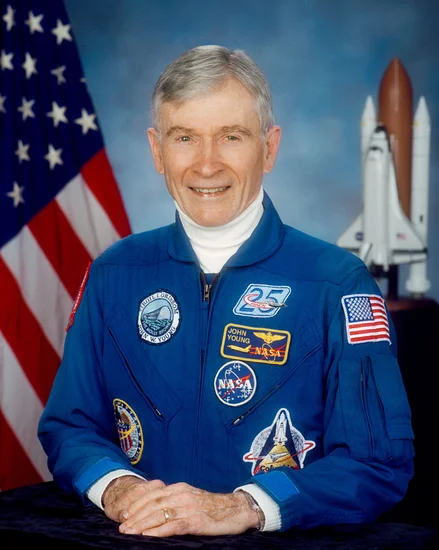
Astronauts John Young and Charles Duke successfully piloted Apollo 16’s Lunar Module to the Moon’s surface, achieving NASA’s fifth crewed lunar landing. The mission targeted the Descartes Highlands, allowing extensive geological exploration of the lunar terrain.
The crew spent three days conducting scientific experiments and collecting 209 pounds of lunar samples. Their discoveries significantly advanced understanding of lunar geology and provided crucial data about the Moon’s formation and evolution.
1963 – Transit Satellite Failure Disperses Radioactive Plutonium

A Transit-5bn satellite failed to reach orbit after launch, causing its nuclear power source to disperse 2.1 pounds of radioactive plutonium across the atmosphere. The SNAP radioisotope thermoelectric generator broke apart during atmospheric reentry, creating widespread contamination concerns.
This incident highlighted the environmental risks associated with nuclear-powered spacecraft and led to enhanced safety protocols. The dispersed plutonium contributed to increased global radiation levels and influenced future policies regarding nuclear materials in space missions.
1946 – Record-Breaking Tornado Measured in South Dakota
The U.S. Weather Bureau recorded a tornado striking Timber Lake, South Dakota, measuring an extraordinary 4 miles in width. This tornado ranked among the widest ever documented, providing crucial data for meteorological research and tornado classification systems.
The massive tornado’s documentation advanced scientific understanding of severe weather phenomena. This measurement contributed to the development of improved tornado tracking and warning systems that would save countless lives in future severe weather events.
Cultural and Arts Events on April 21
1977 – Annie Opens on Broadway

The musical “Annie” premiered on Broadway at the Alvin Theatre, launching one of the most beloved productions in American theater history. The show, based on the comic strip “Little Orphan Annie,” captivated audiences with its optimistic Depression-era story and memorable songs.
The production became a cultural phenomenon, running for 2,377 performances and winning seven Tony Awards. Songs like “Tomorrow” and “Hard Knock Life” became American classics, and the musical spawned numerous revivals and film adaptations.
1934 – Famous Loch Ness Monster Photograph Published

The Daily Mail published the “Surgeon’s Photograph,” the most famous alleged image of the Loch Ness Monster. The photograph, supposedly taken by London gynecologist Robert Kenneth Wilson, showed a long-necked creature emerging from the Scottish lake’s waters.
This image became the most iconic representation of the legendary monster and fueled decades of speculation and tourism. In 1994, the photograph was revealed to be an elaborate hoax, but its impact on popular culture and cryptozoology remained profound.
1962 – Seattle World’s Fair Opens to International Acclaim

The Seattle World’s Fair, officially known as the Century 21 Exposition, opened its gates as the first World’s Fair held in the United States since World War II. The exposition showcased technological innovation and cultural achievement with the theme “Living in the Space Age.”
The fair’s centerpiece, the Space Needle, became an enduring symbol of Seattle and American optimism about the future. Over 9.6 million visitors explored exhibits celebrating scientific progress, space exploration, and international cooperation during the six-month event.
1965 – New York World’s Fair Begins Second Season

The 1964-1965 New York World’s Fair opened for its second and final season in Flushing Meadows, Queens. Despite financial challenges, the fair continued to attract millions of visitors with its vision of technological progress and cultural diversity.
The exposition featured groundbreaking attractions including Disney’s “It’s a Small World” and innovative pavilions showcasing corporate America’s technological achievements. Though commercially unsuccessful, the fair left a lasting impact on popular culture and urban development.
Religious and Social Events on April 21
1926 – Al-Baqi Cemetery Demolished by Wahhabis

Wahhabi forces leveled the Al-Baqi cemetery in Medina, destroying the mausoleum containing four revered Shi’a Imams. This destruction represented a significant escalation in sectarian tensions and marked the systematic elimination of Islamic historical sites deemed idolatrous.
The demolition outraged Shi’a Muslims worldwide and deepened the theological divide between Sunni and Shi’a Islam. This event exemplified the Wahhabi movement’s iconoclastic interpretation of Islamic practice and its rejection of saint veneration.
1965 – Haile Selassie Visits Jamaica
Ethiopian Emperor Haile Selassie I arrived in Jamaica for a historic state visit, an event now celebrated as Grounation Day in the Rastafari movement. Thousands of Rastafarians gathered at Norman Manley International Airport to witness the arrival of their spiritual leader.
The visit validated Rastafarian beliefs about Selassie’s divine nature and strengthened the movement’s connection to African identity. This moment became central to Rastafarian theology and reinforced the movement’s emphasis on African repatriation and cultural pride.
1962 – Universal House of Justice Established

The first election of the Universal House of Justice took place, establishing the supreme governing institution of the Baháʼí Faith. This historic election marked the completion of the administrative structure envisioned by the faith’s founders.
The institution’s establishment fulfilled prophecies within Baháʼí scripture and provided global leadership for the growing religious community. The Universal House of Justice became the ultimate authority on Baháʼí law and the coordinator of worldwide Baháʼí activities.
1950 – Nainital Wedding Massacre Occurs
A tragic massacre in Nainital, India, claimed the lives of 22 members of the Harijan caste during a wedding celebration. This horrific event highlighted the persistent caste-based violence and social discrimination plaguing Indian society.
The massacre exemplified the deadly consequences of untouchability and caste prejudice in post-independence India. This tragedy contributed to national discussions about caste reform and the enforcement of constitutional protections for marginalized communities.
Business and Economic Events on April 21
1952 – Secretary’s Day First Celebrated
The first Secretary’s Day was celebrated across American businesses, later evolving into Administrative Professionals’ Day. This initiative recognized the vital contributions of administrative support staff and aimed to improve recruitment and retention in these essential roles.
The observance reflected changing workplace dynamics and the growing recognition of administrative professionals’ importance. What began as a single day of appreciation expanded into a week-long celebration, highlighting the evolution of administrative careers and professional recognition.
2014 – Flint Water Crisis Begins
The city of Flint, Michigan, switched its water source from Lake Huron to the Flint River, triggering a devastating public health crisis. The decision, made primarily for cost-cutting reasons, exposed residents to dangerous levels of lead and other contaminants.
The crisis ultimately affected up to 12,000 people with lead poisoning and caused at least 12 deaths from Legionnaires’ disease. This disaster led to criminal indictments against 15 officials, including charges of involuntary manslaughter, and became a symbol of environmental injustice.
1989 – Tiananmen Square Student Protests Begin

Approximately 100,000 students gathered in Beijing’s Tiananmen Square to commemorate Chinese reform leader Hu Yaobang and demand democratic reforms. The demonstration marked the beginning of the pro-democracy movement that would dominate Chinese politics for weeks.
The protests represented the largest challenge to Communist Party authority since the Cultural Revolution. Students demanded greater press freedom, democratic reforms, and an end to corruption, setting the stage for the tragic events that would unfold in June.
Transportation and Infrastructure on April 21
1958 – United Airlines Flight 736 Collides with Military Jet

United Air Lines Flight 736 collided with a United States Air Force fighter jet near Arden, Nevada, in what is now Enterprise, Nevada. The mid-air collision highlighted the growing dangers of shared airspace between civilian and military aircraft.
This accident contributed to the development of improved air traffic control systems and separation protocols. The tragedy underscored the need for better coordination between civilian and military aviation authorities in increasingly crowded skies.
2012 – Train Collision Near Amsterdam Injures 116

Two trains collided head-on near Sloterdijk station in Amsterdam, killing one person and injuring 116 others. The accident occurred during morning rush hour, making it one of the Netherlands’ most serious railway accidents in recent decades.
The collision prompted extensive safety reviews of Dutch railway systems and signaling procedures. Investigators focused on human error and equipment failure, leading to enhanced safety protocols and improved emergency response procedures.
1960 – Brasília’s Infrastructure Inaugurated
The simultaneous transfer of Brazil’s three branches of government to Brasília represented a massive infrastructure achievement. The new capital’s road network, government buildings, and urban planning showcased modernist architecture and urban design principles.
This infrastructure project transformed Brazil’s interior and demonstrated the country’s capacity for large-scale development. The city’s construction employed thousands of workers and represented one of the 20th century’s most ambitious urban planning projects.
Sports and Recreation on April 21
1982 – Rollie Fingers Achieves 300th Save

Milwaukee Brewers pitcher Rollie Fingers became the first pitcher in baseball history to record 300 career saves. This milestone established Fingers as the premier relief pitcher of his era and helped define the modern closer role.
Fingers’ achievement revolutionized baseball strategy and elevated the importance of specialized relief pitching. His handlebar mustache and clutch performances made him a fan favorite and helped establish the save statistic as a measure of pitching excellence.
1962 – Seattle World’s Fair Sports Exhibitions

The Seattle World’s Fair featured numerous sports exhibitions and demonstrations, showcasing athletic achievements alongside technological innovation. These events helped establish the connection between sports and international cultural exchange.
The fair’s sports programming included demonstrations of emerging recreational activities and international competitions. These exhibitions contributed to the growing popularity of various sports and highlighted the role of athletics in cultural diplomacy.
1965 – New York World’s Fair Athletic Demonstrations

The 1964-1965 New York World’s Fair’s second season featured expanded athletic demonstrations and sports exhibitions. These events showcased American athletic achievements and promoted international sporting cooperation.
The fair’s sports programming helped popularize various athletic activities and demonstrated the connection between physical fitness and technological progress. These exhibitions contributed to the growing emphasis on sports as a form of cultural expression and international understanding.
Notable Births on April 21
1926 – Elizabeth II, Queen of the United Kingdom
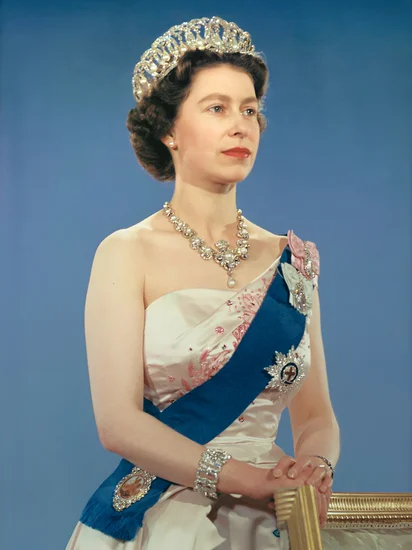
Princess Elizabeth Alexandra Mary Windsor was born in London, destined to become Britain’s longest-reigning monarch. Her birth as the first child of the Duke and Duchess of York positioned her third in line to the throne.
Elizabeth would ascend to the throne in 1952 and reign for over 70 years until her death in 2022. Her reign spanned the transformation of the British Empire into the Commonwealth and witnessed profound social and political changes throughout the United Kingdom.
1915 – Anthony Quinn, Mexican-American Actor
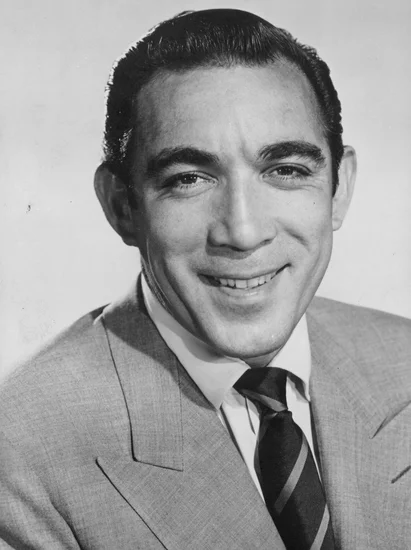
Anthony Quinn was born in Chihuahua, Mexico, beginning a life that would make him one of Hollywood’s most versatile character actors. His distinctive appearance and powerful screen presence made him perfect for roles depicting various ethnicities and cultures.
Quinn won two Academy Awards for Best Supporting Actor and appeared in over 100 films during his career. His performances in “Viva Zapata!” and “Lust for Life” established him as one of cinema’s most compelling and authentic performers.
1947 – Iggy Pop, American Singer-Songwriter

James Newell Osterberg Jr., known professionally as Iggy Pop, was born in Muskegon, Michigan. His early fascination with rock and roll would lead him to become one of punk rock’s most influential pioneers and performers.
As frontman of The Stooges and later as a solo artist, Iggy Pop helped define punk rock’s raw energy and rebellious spirit. His wild stage performances and influential albums like “Raw Power” earned him the title “The Godfather of Punk.”
1949 – Patti LuPone, American Actress and Singer

Patti LuPone was born in Northport, New York, beginning a career that would make her one of Broadway’s most celebrated performers. Her powerful voice and dramatic intensity made her perfect for challenging musical theater roles.
LuPone won Tony Awards for her performances in “Evita” and “Gypsy,” establishing herself as a Broadway legend. Her interpretations of complex female characters and her fearless approach to performance made her one of musical theater’s most respected artists.
1963 – Tony Danza, American Actor

Tony Danza was born in Brooklyn, New York, and would become one of television’s most beloved performers. His natural charisma and everyman appeal made him perfect for family-friendly television roles.
Danza achieved fame starring in “Taxi” and “Who’s the Boss?” becoming a household name in American television. His warm personality and genuine screen presence made him one of the most recognizable faces of 1980s television.
1958 – Andie MacDowell, American Actress

Rosalie Anderson MacDowell was born in Gaffney, South Carolina, and would become one of Hollywood’s most distinctive leading ladies. Her Southern charm and natural beauty made her a favorite for romantic comedies and dramatic roles.
MacDowell starred in critically acclaimed films like “Sex, Lies, and Videotape” and popular comedies like “Four Weddings and a Funeral.” Her performances demonstrated remarkable range and helped establish her as a reliable and talented actress.
1995 – James McAvoy, Scottish Actor

James McAvoy was born in Glasgow, Scotland, and would become one of Britain’s most versatile young actors. His ability to portray both dramatic and comedic roles made him a favorite among directors and audiences alike.
McAvoy achieved international fame in films like “Atonement,” “X-Men,” and “Split,” demonstrating remarkable range and intensity. His performances consistently showcased his ability to embody complex characters and deliver emotionally powerful portrayals.
Notable Deaths on April 21
1910 – Mark Twain, American Novelist and Humorist

Samuel Langhorne Clemens, known worldwide as Mark Twain, died at his home in Redding, Connecticut, at age 74. The beloved author of “The Adventures of Tom Sawyer” and “The Adventures of Huckleberry Finn” had been in declining health for several years.
Twain’s death marked the end of an era in American literature and humor. His wit, social commentary, and masterful storytelling had made him not only a literary giant but also a beloved public figure who embodied the American spirit.
1918 – Manfred von Richthofen, German Fighter Pilot

The legendary “Red Baron” was killed in action over Vaux-sur-Somme, France, at age 25. Baron Manfred von Richthofen had achieved 80 confirmed aerial victories, making him the most successful fighter pilot of World War I.
Von Richthofen’s death dealt a significant blow to German morale and marked the end of the war’s most famous aerial ace. His red-painted aircraft and chivalrous reputation had made him a legend even among his enemies.
1946 – John Maynard Keynes, English Economist

The influential economist John Maynard Keynes died at his home in Firle, Sussex, at age 62. His revolutionary economic theories had fundamentally changed how governments approached fiscal policy and economic management.
Keynes’ death came as his economic ideas were being implemented worldwide to address post-war reconstruction. His advocacy for government intervention in economic downturns had already begun to transform economic policy and would continue to influence governments for decades.
1924 – Eleonora Duse, Italian Actress

The legendary Italian actress Eleonora Duse died in Pittsburgh, Pennsylvania, at age 65 while on an American tour. Widely regarded as one of the greatest actresses of her generation, she had revolutionized theatrical performance with her naturalistic style.
Duse’s death marked the end of an era in theater, as she had been instrumental in moving away from melodramatic acting toward more realistic portrayals. Her influence on acting technique and her passionate performances had made her an international icon.
2016 – Prince, American Singer-Songwriter
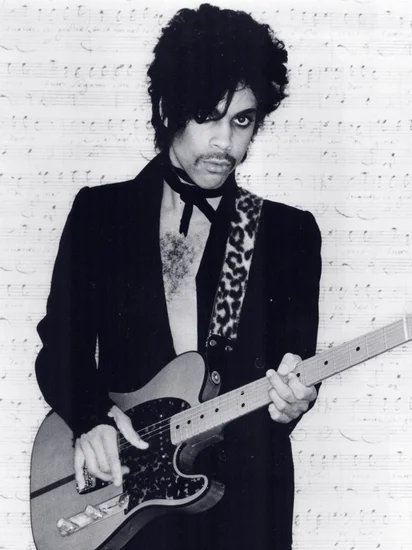
Prince Rogers Nelson, known mononymously as Prince, died at his Paisley Park estate in Minnesota at age 57. The musical genius had revolutionized popular music with his innovative sound, flamboyant style, and prolific output.
Prince’s death shocked the music world and prompted a global outpouring of grief from fans and fellow musicians. His influence on music, fashion, and performance art had made him one of the most important cultural figures of the late 20th century.
2003 – Nina Simone, American Singer and Activist
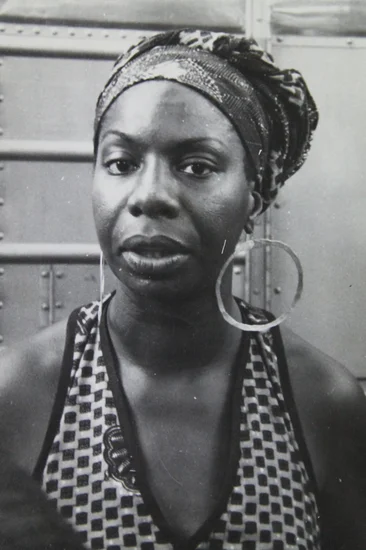
Nina Simone died at her home in Carry-le-Rouet, France, at age 70. The classically trained pianist had become one of America’s most powerful voices for civil rights and social justice through her music and activism.
Simone’s death marked the loss of a unique artistic voice that had bridged classical music, jazz, blues, and protest songs. Her passionate performances and unwavering commitment to social justice had made her an icon of both music and civil rights.
1987 – Gustav Bergmann, Austrian-American Philosopher
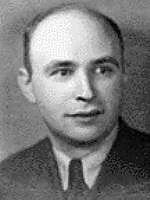
Gustav Bergmann died in Iowa City, Iowa, at age 80. A member of the Vienna Circle, he had been instrumental in developing logical positivism and had significantly influenced 20th-century philosophy.
Bergmann’s death marked the loss of one of the last direct links to the Vienna Circle and its revolutionary approach to philosophy. His work in metaphysics and philosophy of mind had helped shape modern analytical philosophy.
Holidays and Observances on April 21
Civil Service Day (India)
India observes Civil Service Day annually on April 21st to honor the country’s administrative services and civil servants. The day recognizes the vital role that civil servants play in implementing government policies and serving the public interest.
The observance includes ceremonies honoring outstanding civil servants and discussions about improving public administration. Government offices across India hold special programs to acknowledge the dedication and service of civil servants at all levels.
Grounation Day (Rastafari)
Rastafarians worldwide celebrate Grounation Day on April 21st, commemorating Emperor Haile Selassie I’s historic visit to Jamaica in 1965. The day holds profound spiritual significance for Rastafarians, who regard Selassie as their spiritual leader and the fulfillment of biblical prophecy.
The celebration includes special prayers, reasoning sessions, and cultural activities that emphasize African identity and repatriation. Rastafarian communities gather to reflect on their faith’s core principles and Selassie’s message of African unity and pride.
National Tea Day (United Kingdom)
The United Kingdom celebrates National Tea Day on April 21st, honoring the nation’s beloved tea-drinking tradition. The observance celebrates tea’s central role in British culture and its importance in daily social rituals.
Tea merchants, cafes, and cultural organizations participate in special events promoting tea appreciation and education. The day highlights Britain’s historical connection to tea and its continuing importance in British social life and hospitality.
San Jacinto Day (Texas)
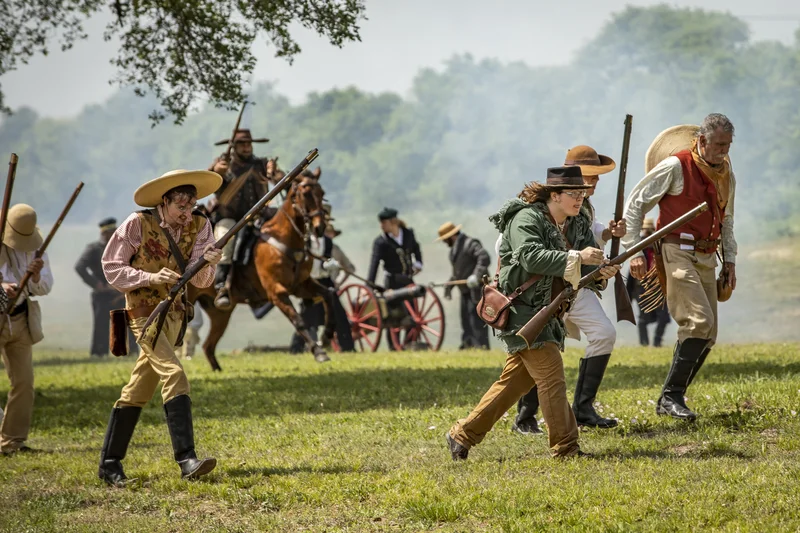
Texas commemorates San Jacinto Day on April 21st, marking the decisive 1836 battle that secured Texas independence from Mexico. The day celebrates the victory that led to the establishment of the Republic of Texas and eventual statehood.
The observance includes ceremonies at the San Jacinto Monument and educational programs about Texas history. Schools and communities across Texas hold special events to honor the battle’s significance and remember those who fought for Texas independence.
National Tree Planting Day (Kenya)
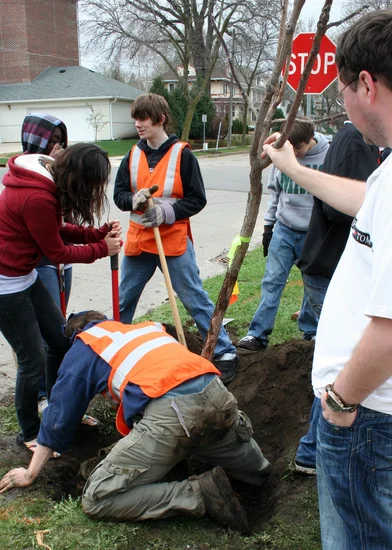
Kenya observes National Tree Planting Day on April 21st, promoting environmental conservation and reforestation efforts. The day encourages citizens to plant trees and participate in activities that combat deforestation and climate change.
Government agencies, schools, and community organizations coordinate tree-planting activities across the country. The observance emphasizes the importance of forests for environmental sustainability and Kenya’s commitment to increasing forest cover.
